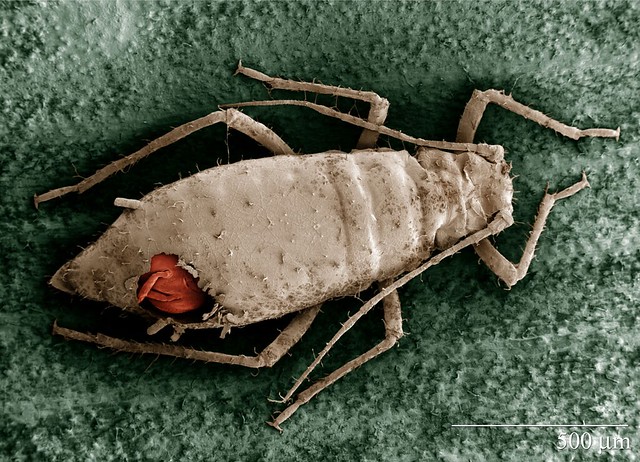
At Halloween, people revel in ghosts, goblins, and things that go bump in the night. Not all are in books or movies, though. There are plenty of creepy critters doing downright scary things every day in your own backyard.
That’s not necessarily a bad thing, since many of these “monsters” are actually good guys getting the bad guys out of town; it’s just not always pleasant to watch.
Fire ants are common in subtropical Southeastern states and have shown up as far west as California. These stinging ants are not just painful pests; they’re also a bane to agriculture, feeding on young plants and seeds, causing an estimated crop loss of $750 million per year. There are many ways to control or eliminate fire ants, but nature provides one that is tailor made for the silver screen!
Enter the phorid fly, a natural predator of the fire ant. The fly swoops in on its target and deposits an egg into the ant. After hatching inside the ant, the maggot works its way into the ant’s head, where it lives for a couple of weeks, feeding on bodily fluids. The maggot then releases chemicals that eat away at the ant’s body until its head falls off. The maggot then stays in the severed head and feeds on brains until it reaches maturity and breaks out through the ant’s mouth.
Like zombies? You will, if you don’t like cockroaches. The jewel wasp injects a serum into its victim, which “zombifies” the roach into submitting to its will. The passive zombie roach allows the wasp to lead it by an antenna into a nest, which quickly becomes a nursery after the wasp lays its egg. As with the phorid fly larvae, it feeds off its host until it reaches maturity.
Mummies also abound in gardens and fields, courtesy of a pair of wasps. These wasps (Aphidiinae braconid wasps – pictured – and Pteromalid chaclid wasps) also deposit an egg inside the body of their prey, this time an aphid. The wasp larvae grow inside the aphid, which soon becomes mummified in that it turns inflated, rigid, and off-color. After the larva becomes an adult wasp, it chews its way out, leaving the mummy husk behind.
“Husks are fun to collect and are routinely encountered in gardens,” said Matt Buffington, a research scientist with the Agricultural Research Service’s Systematic Entomology Laboratory, in Beltsville, Maryland. “In fact, if you have them, it’s a good sign your aphid problems are being somewhat controlled.”
Aphids are a scourge to crops and horticulture, where they suck on sap, which causes yellowing, stunting, distortion of plant parts, leaf mold, and, in cotton, poor fiber quality. Aphids can also transmit plant viruses.
Not to be outdone, some bees (Trigona hypogea) make an appearance as scavenger vampires.
“Instead of providing their young with protein from pollen, vampire bees gather protein from carcasses on the forest floor,” Buffington said. “Further, they have unique jaws for tearing into dead animal flesh and cutting it into pieces for transport and digestion.”
There are plenty of other examples of insects that exemplify Halloween, but one of the spookiest icons is actually a mammal – the humble bat. If you can get past the vampire nature of some bats, you’ll find that many species of bats are great friends of plants; they pollinate, spread seeds, and feed on pesky bugs.
So, on All Hallows’ Eve, as you’re greeting young ghosts and goblins doing their rounds of trick-or-treating, don’t forget about those beneficial creepy critters in your own backyard.


